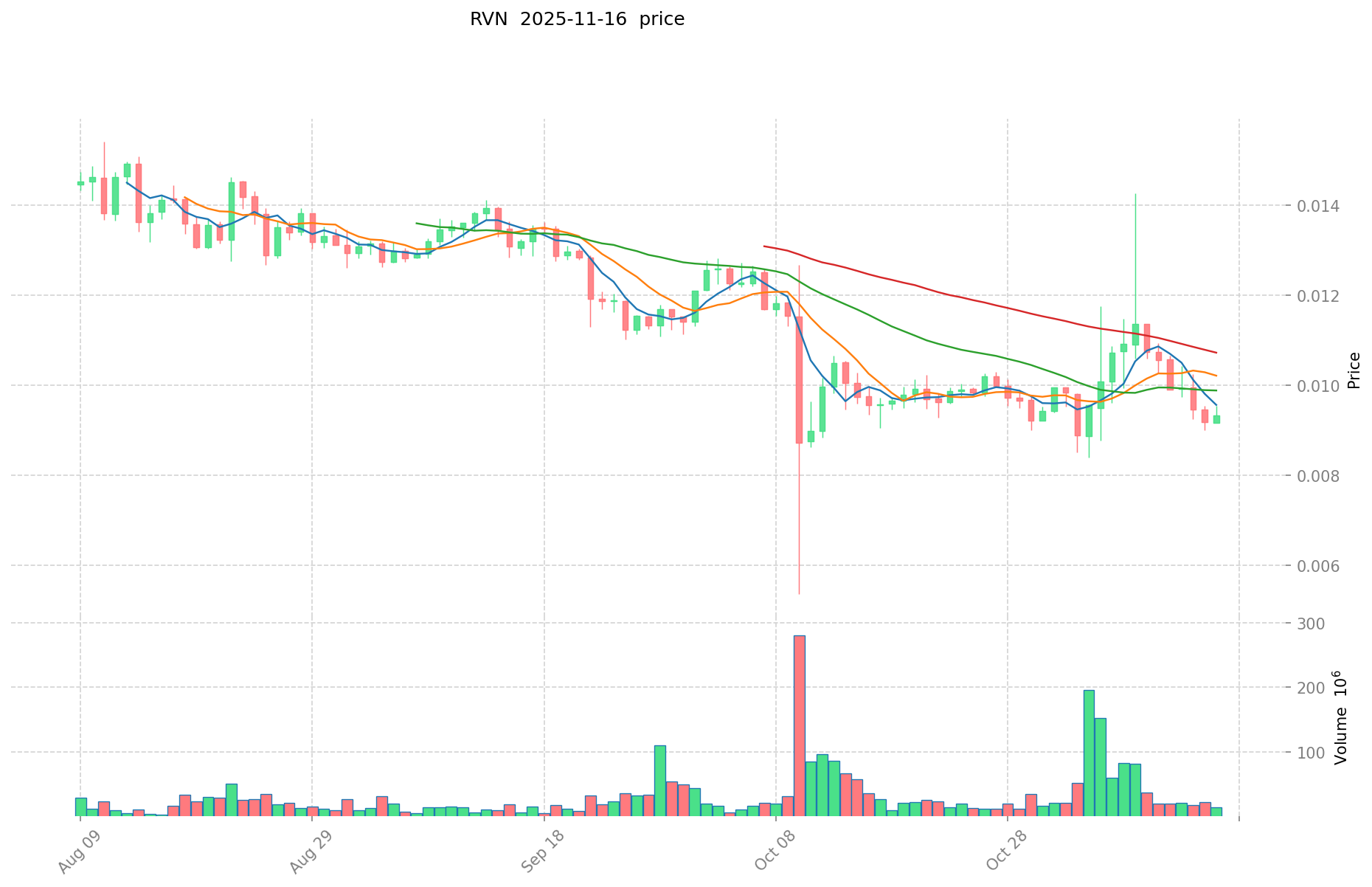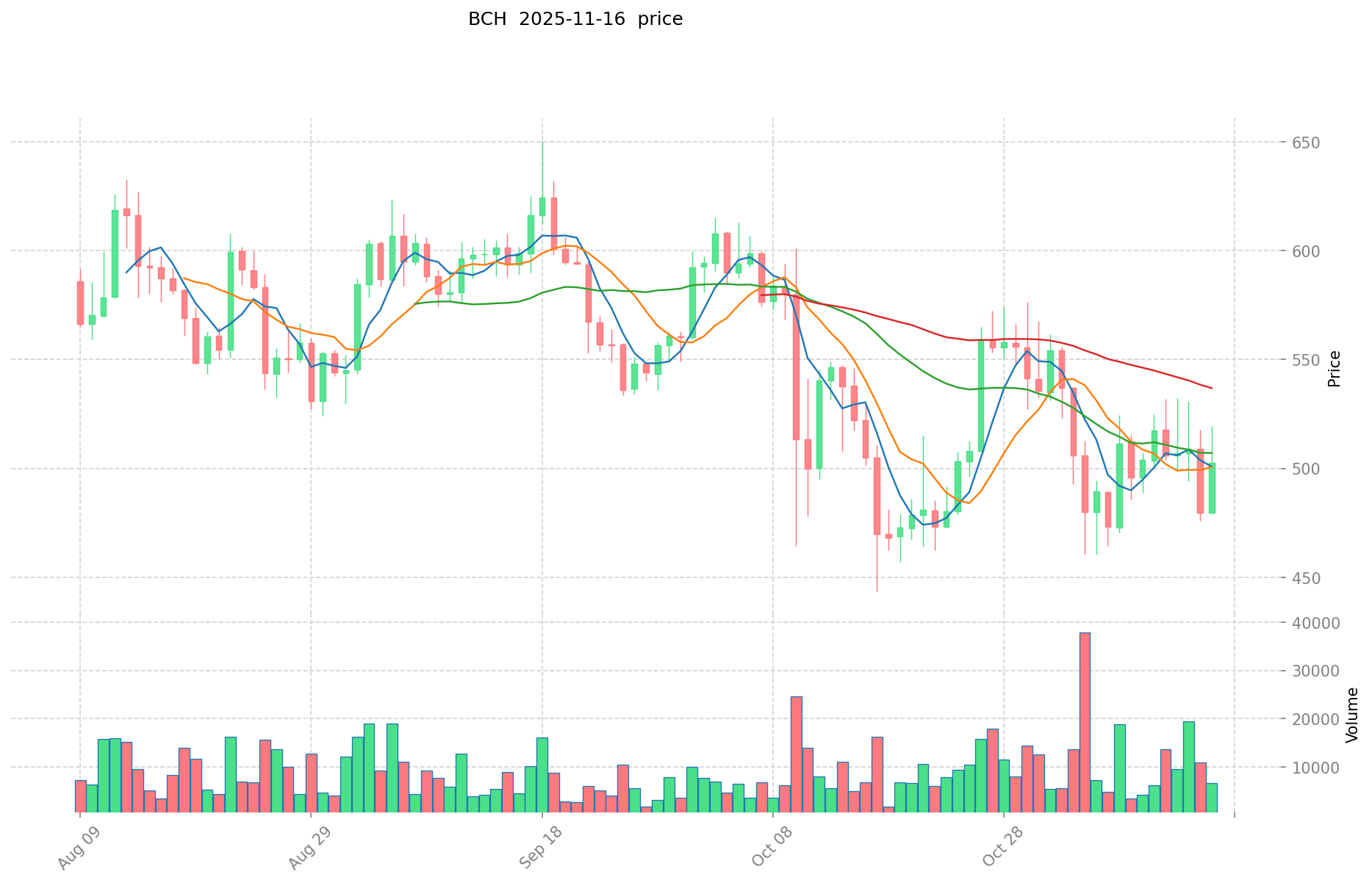RVN vs BCH: Comparing Mining Profitability and Network Security in 2023
Introduction: RVN vs BCH Investment Comparison
In the cryptocurrency market, the comparison between Ravencoin vs Bitcoin Cash has been an unavoidable topic for investors. The two not only show significant differences in market cap ranking, application scenarios, and price performance, but also represent different positions in the crypto asset space.
Ravencoin (RVN): Launched in 2018, it has gained market recognition for its focus on transferring assets efficiently from one party to another.
Bitcoin Cash (BCH): Since its inception in 2017, it has been hailed as a "peer-to-peer electronic cash system," and is one of the cryptocurrencies with the highest global trading volume and market capitalization.
This article will comprehensively analyze the investment value comparison between RVN vs BCH, focusing on historical price trends, supply mechanisms, institutional adoption, technological ecosystems, and future predictions, attempting to answer the question most concerning to investors:
"Which is the better buy right now?"
I. Price History Comparison and Current Market Status
RVN (Coin A) and BCH (Coin B) Historical Price Trends
- 2021: RVN reached its all-time high of $0.285218 on February 20, 2021.
- 2017: BCH was created through a hard fork of Bitcoin on August 1, 2017, and reached its all-time high of $3,785.82 on December 20, 2017.
- Comparative analysis: Since their respective all-time highs, RVN has dropped to a current price of $0.009375, while BCH has declined to $501.18.
Current Market Situation (2025-11-16)
- RVN current price: $0.009375
- BCH current price: $501.18
- 24-hour trading volume: RVN $126,985.86376 vs BCH $2,759,286.41764
- Market Sentiment Index (Fear & Greed Index): 10 (Extreme Fear)
Click to view real-time prices:
- View RVN current price Market Price
- View BCH current price Market Price


II. Core Factors Affecting Investment Value of RVN vs BCH
Supply Mechanisms Comparison (Tokenomics)
-
Ravencoin (RVN): Maximum supply capped at 21 billion coins, with block rewards that halve every 4 years
-
Bitcoin Cash (BCH): Maximum supply capped at 21 million coins, with periodic halving events similar to Bitcoin
-
📌 Historical Pattern: Both coins follow a deflationary model with scheduled halvings that have historically created supply constraints leading to price appreciation cycles.
Institutional Adoption and Market Applications
- Institutional Holdings: BCH has gained more institutional adoption, being listed on major exchanges and included in crypto investment products
- Enterprise Adoption: BCH has broader adoption in payment processing and retail transactions, while RVN is primarily used for asset tokenization and transfer
- Regulatory Attitudes: BCH generally faces similar regulatory treatment as Bitcoin in most jurisdictions, while RVN has lower regulatory visibility
Technical Development and Ecosystem Building
- RVN Technical Upgrades: Focused on asset issuance capabilities, allowing for creation and transfer of unique tokens representing real-world assets
- BCH Technical Development: Maintains larger block sizes (up to 32MB) enabling higher transaction throughput, with ongoing improvements to smart contract functionality
- Ecosystem Comparison: BCH has a more developed payment ecosystem with wider merchant adoption, while RVN specializes in asset tokenization and digital ownership applications
Macroeconomic Factors and Market Cycles
- Performance During Inflation: BCH has stronger brand recognition as a potential inflation hedge due to its Bitcoin lineage
- Monetary Policy Impact: Both are influenced by broader crypto market trends in response to monetary policy shifts
- Geopolitical Factors: BCH has greater adoption in regions with currency instability as an alternative payment method III. 2025-2030 Price Prediction: RVN vs BCH
Short-term Prediction (2025)
- RVN: Conservative $0.0047838 - $0.00938 | Optimistic $0.00938 - $0.013132
- BCH: Conservative $486.4162 - $501.46 | Optimistic $501.46 - $692.0148
Mid-term Prediction (2027)
- RVN may enter a growth phase, with expected price range $0.0091207368 - $0.0173787012
- BCH may enter a volatile phase, with expected price range $433.2313524 - $779.81643432
- Key drivers: Institutional fund inflows, ETF, ecosystem development
Long-term Prediction (2030)
- RVN: Base scenario $0.01866452172102 - $0.025570394757797 | Optimistic scenario $0.025570394757797+
- BCH: Base scenario $825.52615443410112 - $948.880637280576 | Optimistic scenario $948.880637280576 - $1318.94408582000064
Disclaimer: This analysis is based on historical data and market projections. Cryptocurrency markets are highly volatile and unpredictable. This information should not be considered as financial advice. Always conduct your own research before making investment decisions.
RVN:
| 年份 | 预测最高价 | 预测平均价格 | 预测最低价 | 涨跌幅 |
|---|---|---|---|---|
| 2025 | 0.013132 | 0.00938 | 0.0047838 | 0 |
| 2026 | 0.01339464 | 0.011256 | 0.00664104 | 20 |
| 2027 | 0.0173787012 | 0.01232532 | 0.0091207368 | 31 |
| 2028 | 0.016782771978 | 0.0148520106 | 0.010693447632 | 58 |
| 2029 | 0.02151165215304 | 0.015817391289 | 0.00917408694762 | 68 |
| 2030 | 0.025570394757797 | 0.01866452172102 | 0.013251810421924 | 99 |
BCH:
| 年份 | 预测最高价 | 预测平均价格 | 预测最低价 | 涨跌幅 |
|---|---|---|---|---|
| 2025 | 692.0148 | 501.46 | 486.4162 | 0 |
| 2026 | 847.367108 | 596.7374 | 352.075066 | 19 |
| 2027 | 779.81643432 | 722.052254 | 433.2313524 | 44 |
| 2028 | 1073.8361121488 | 750.93434416 | 630.7848490944 | 49 |
| 2029 | 985.376046406752 | 912.3852281544 | 766.403591649696 | 82 |
| 2030 | 1318.94408582000064 | 948.880637280576 | 825.52615443410112 | 89 |
IV. Investment Strategy Comparison: RVN vs BCH
Long-term vs Short-term Investment Strategies
- RVN: Suitable for investors interested in asset tokenization and digital ownership applications
- BCH: Suitable for investors looking for a more established payment ecosystem and potential inflation hedge
Risk Management and Asset Allocation
- Conservative investors: RVN 20% vs BCH 80%
- Aggressive investors: RVN 40% vs BCH 60%
- Hedging tools: Stablecoin allocation, options, cross-currency portfolio
V. Potential Risk Comparison
Market Risks
- RVN: Higher volatility due to lower market cap and trading volume
- BCH: Susceptible to broader cryptocurrency market trends and Bitcoin price movements
Technical Risks
- RVN: Scalability, network stability
- BCH: Mining centralization, security vulnerabilities
Regulatory Risks
- Global regulatory policies may have differing impacts on both coins, with BCH potentially facing more scrutiny due to its higher profile
VI. Conclusion: Which Is the Better Buy?
📌 Investment Value Summary:
- RVN advantages: Focus on asset tokenization, potential for growth in digital ownership applications
- BCH advantages: Wider adoption in payment processing, stronger brand recognition, larger ecosystem
✅ Investment Advice:
- New investors: Consider a small allocation to BCH for exposure to the cryptocurrency payment sector
- Experienced investors: Diversify with both RVN and BCH, adjusting allocation based on risk tolerance
- Institutional investors: Focus on BCH for its higher liquidity and established market presence
⚠️ Risk Warning: The cryptocurrency market is highly volatile. This article does not constitute investment advice. None
VII. FAQ
Q1: What are the main differences between Ravencoin (RVN) and Bitcoin Cash (BCH)? A: RVN focuses on asset tokenization and transfer, while BCH is primarily used as a peer-to-peer electronic cash system. BCH has a larger market cap, higher trading volume, and wider adoption in payment processing.
Q2: Which coin has performed better historically? A: BCH has historically reached a higher all-time high price of $3,785.82 in December 2017, compared to RVN's all-time high of $0.285218 in February 2021. However, both have seen significant price declines since their peaks.
Q3: How do the supply mechanisms of RVN and BCH compare? A: Both coins have a maximum supply cap and follow a deflationary model. RVN has a maximum supply of 21 billion coins, while BCH has a cap of 21 million coins. Both implement periodic halving events to reduce new coin issuance over time.
Q4: Which coin has greater institutional adoption? A: BCH has gained more institutional adoption, being listed on major exchanges and included in crypto investment products. It also has broader adoption in payment processing and retail transactions compared to RVN.
Q5: What are the key factors affecting the future price predictions for RVN and BCH? A: Key factors include institutional fund inflows, potential ETF approvals, ecosystem development, macroeconomic conditions, regulatory developments, and technological advancements in their respective focus areas.
Q6: How should investors approach allocating between RVN and BCH? A: Conservative investors might consider allocating 20% to RVN and 80% to BCH, while more aggressive investors could opt for a 40% RVN and 60% BCH split. The exact allocation should be based on individual risk tolerance and investment goals.
Q7: What are the primary risks associated with investing in RVN and BCH? A: Both coins face market risks related to volatility and broader cryptocurrency trends. RVN may have higher volatility due to its smaller market cap. Technical risks include scalability and network stability for RVN, and mining centralization for BCH. Regulatory risks could impact both coins, with BCH potentially facing more scrutiny due to its higher profile.
Share
Content